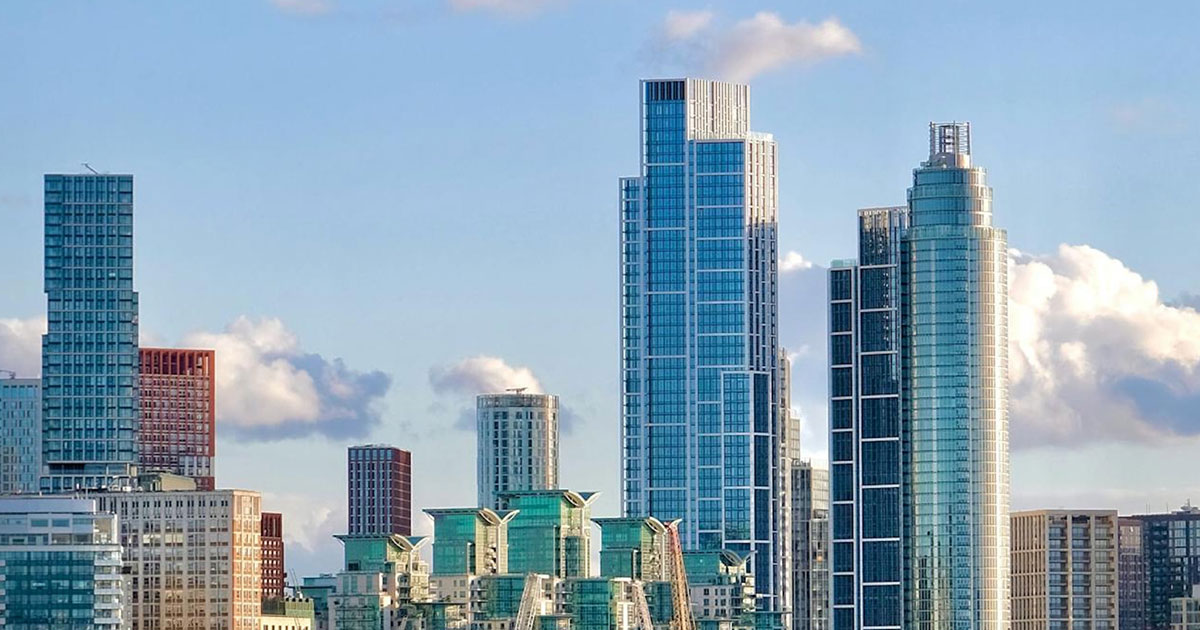TCC provides welcome guidance in relation to information orders under the Building Safety Act 2022

In BDW Trading Limited v Ardmore Construction Limited and ors [2025] EWHC 434 (TCC) (here), the Technology and Construction Court provided instructive guidance as to the correct interpretation of section 132 of the Building Safety Act 2022 (“BSA 2022”) relating to information orders (“Information Orders”).
Building Liability Orders
Section 130 of the BSA 2022 provides that the High Court may make an order (where it is just and equitable to do so) providing that a relevant liability of an original body corporate relating to a specified building is also the liability of another specified body corporate, or the joint and several liability of two or more specified bodies corporate. These types of order are known as “Building Liability Orders”.
A relevant liability (within the meaning of section 130) (“Relevant Liability”) is liability which has been incurred either (1) under the Defective Premises Act 1972 or section 38 of the Building Act 1984, or (2) as a result of a building safety risk.
A body corporate may only be “specified” in circumstances where it is, or has at any time in the relevant period been, associated with the original body. A body corporate will generally be considered to be associated with another if (a) one of them controls the other, or (b) a third body corporate controls both of them.
Information Orders
The BSA 2022 provides a mechanism for applicants to obtain information about entities against which they may wish to make an application for a Building Liability Order.
A person of a prescribed description may apply for an Information Order: an order requiring a specified body corporate to give, by a specified time, specified information and/or documents relating to persons who are, or have at any time in a specified period been, associated with a body corporate.
By way of limitation of this power, an Information Order shall only be made if it appears to the Court that:
(a) the body corporate is subject to a Relevant Liability, and
(b) it is appropriate to require the information or documents to be provided for the purpose of enabling the applicant (or the applicant and others) to make, or consider whether to make, an application for a Building Liability Order.
Key takeaways
The decision in BDW v Ardmore established the following in relation to Information Orders:
- Information Orders will only be made against an associated entity(/ies) of a body corporate where the associated entity(/ies) has a Relevant Liability.
- The Court, when assessing an application for an Information Order, will do so based on the merit of the information put before it, and should not become embroiled in an assessment of liability. Applications for Information Orders should therefore be short and uncomplicated.
- Information Orders should not be used as a fishing exercise – the information sought by the applicant must actually be required for the purposes of applying for, or considering whether to apply for, a Building Liability Order.
Background
BDW engaged Ardmore Construction Limited (“ACL”) between 1995 and 2005 to design and build five separate buildings. Following the Grenfell tragedy, fire safety and structural defects were discovered in all five of the buildings and BDW brought a number of claims against ACL, claiming that the relevant defects in the buildings had been caused by ACL’s breach of its duties under the Defective Premises Act 1972, and/or pursuant to the Civil Liability Contribution Act 1978, ACL was liable to make a contribution and/or to indemnify BDW in respect of the remedial works required.
ACL’s alleged liabilities in respect of all five buildings totalled approximately £85 million. Having reviewed ACL’s latest publicly available accounts, BDW decided that, as it appeared to BDW that ACL alone would not be in a position to discharge the value of the alleged liabilities in full, it would apply for a Building Liability Order against a number of entities associated with ACL.
BDW made two applications for Information Orders: (1) against ACL (the “First Application”); and (2) against the second, third and fourth respondents (“R2”, “R3” and “R4”, respectively)(the “Second Application”). ACL was a wholly owned subsidiary of R2, R2 was a wholly owned subsidiary of R3, R3 was a wholly owned subsidiary of R4 and R4 was the ultimate parent company.
In its applications, BDW sought a wide range of information and documents from ACL and R2, R3 and R4 including, among other things, details of the corporate and security structure of the group as a whole, details of all existing banking and lending arrangements within the group, up-to-date management accounts, reports and medium term forecasts (including projected profit and loss and cashflow and balance sheets).
Decision of the TCC
In refusing both applications, Judge Keyser KC provided some very helpful guidance as to the correct interpretation of section 132.
The Second Application
One of the conditions that must be met before an Information Order can be made is that it must appear to the Court that the body corporate against whom the Information Order has a Relevant Liability. In the first instance, the Court considered the Second Application and held that no Information Order could be made against R2, R3 or R4 as they had no Relevant Liability. ACL alone had been party to the underlying building contracts for each of the five buildings and therefore, ACL alone could have a Relevant Liability. R2, R3 and R4 were, at most, simply associates of a company with a Relevant Liability. The Second Application was therefore dismissed.
Significantly, the Court’s conclusion on this point is contrary to the scenario outlined in the explanatory notes to the BSA 2022 (in which it was suggested that an Information Order could be made, not against the original body, but against a company believed to be an associate of the original body, regardless of the existence of a Relevant Liability). The Court noted that, while the explanatory notes may guide the reader as to the purpose of a particular provision, they will never override the meaning of the underlying statute itself. The reader should not assume that the explanatory notes correctly state the effect of the statute.
The First Application
In the First Application, BDW argued that, in accordance with the explanatory notes, the Court could be satisfied that ACL had a Relevant Liability (and that the condition had thus been satisfied) in circumstances where (1) BDW had sought and received expert advice that serious fire safety and/or structural defects existed which gave rise to serious safety risks and required remedial works, (2) BDW had received legal advice that, in respect of all five buildings, a claim could be made against ACL under the Defective Premises Act 1972, and (3) BDW intended to seek damages from ACL in respect of these claims.
Alternatively, BDW argued that the Court could nevertheless still be satisfied that ACL had a Relevant Liability for either of the following reasons: (a) the Court should consider it implausible that ACL would be able to defeat the case against it in respect of all five developments, or (b) if section 132(3)(a) required a Relevant Liability must already have been established before an Information Order could be made, this had already been satisfied in respect the Crown Heights development, given that the adjudicator had awarded BDW its entire claim against ACL, and BDW would incur costs in respect of a future appeal in connection with this decision.
ACL argued that BDW had failed to establish ACL’s alleged Relevant Liability in respect of each of the developments as the phrasing in section 132(3)(a) is in the present tense: “is subject to a relevant liability”. Two of the five developments were the subject of early litigation, two more were the subject of ongoing (confidential) arbitration, and ACL argued that its liability in respect of the Crown Heights development had been discharged, owing to the fact that an adjudicator had awarded BDW the value of its claim in full, an amount that has subsequently been paid in full by ACL.
In refusing the First Application, the Court made the following observations:
- BDW’s argument that the condition in section 132(3)(a) would be satisfied if the Court considered that the Respondent’s Relevant Liability had been asserted on reasonable, or plausible, or credible grounds (i.e. that the corporate body against whom the Information Order was sought was potentially “in the frame” for a Relevant Liability) was incorrect. The phasing “it appears to the Court” could not be construed as meaning anything other than a view arrived at by the Court – it was not a requirement that the Court must only be satisfied as to the “possibility of the existence of a state of affairs” rather than the actual existence of the state of affairs.
- ACL’s liability in respect of Crown Heights had been discharged by payment of the adjudicator’s award in full. Any potential future liability for costs relating to the adjudication could not be said to be a Relevant Liability.
- In relation to the other four developments, although the definition of Relevant Liability was not specifically constrained to a “specified building”, given that the very purpose of an Information Order is to facilitate an applicant’s consideration as to whether to make an application for a Building Liability Order (which requires the demonstration of Relevant Liability relating to a specified building to succeed), any application for an Information Order must therefore demonstrate that a body corporate’s Relevant Liability relates to a specified building. The fact that an indeterminate claim against one or more of the developments might ultimately succeed was not sufficient to satisfy this condition.
- While it is not strictly necessary for the existence of a Relevant Liability to have been conclusively established prior to making an application for an Information Order, at the hearing of an application for an Information Order, the Court is not required to make any determination of liability where this has not already been established.
- Section 132 is not a vehicle for resolving underlying disputes and therefore, at the hearing of an application for an Information Order, there is no question of engaging anything like trial procedures, e.g. examination of lay or expert witnesses.
- Applications for Information Orders do not impose any obligation on the court to “become embroiled in assessments of the merits of disputed matters”. The Court acknowledged that this may mean applications for Information Orders may be made sparingly in cases where liability is at issue.
- Applications for Information Orders should be short and uncomplicated.
Additional non-binding comments
The Court made a number of additional non-binding comments, as follows:
- In relation to Building Liability Orders, there was nothing in section 130 which suggested that it is a precondition to the making of a Building Liability Order that a Relevant Liability of an original body must already have been established.
- In the absence of any restriction on the types of documents and/or categories of information permissible in section 132, an Information Order could specify the provision of any information and/or documents which would enable an applicant to identify the associate(s) of a body corporate or which concerned the financial position of the associate(s) of a body corporate.





